History GK From IAS Exam 2002 and 2003:
1. The real intention of the British for including the princely states in the Federal Union proposed by the India Act of 1935 was to
(A) exercise more and direct political and administrative
(B) involve the princes actively in the administration of the colony
(C) finally effect the complete political and administrative take-over of all the princely states by the British
(D) use the princes to counter-balance the anti-imperialist doctrine of the nationalist leaders
Ans: use the princes to counter-balance the anti-imperialist doctrine of the nationalist leaders (D)
2. The President of Indian National Congress at the time of partition of India was
(A) C.Rajagopalachari
(B) J.B.Kripalani
(C) Jawaharlal Nehru
(D) Maulana Abul Kalam Azad
Ans: J.B.Kripalani (B)
3. The last opportunity to avoid the partition of India was lost with the rejection of
(A) Cripps Mission
(B) Rajagopalachari Formula
(C) Cabinet Mission
(D) Wavell Plan
Ans: Cabinet Mission (C)
4. The members of the Constituent Assembly which drafted the Constitution of India were
(A) nominated by the British Parliament
(B) nominated by the Governor-General
(C) elected by the Legislative Assemblies of various province
(D) elected by the Indian National Congress and Muslim League
Ans: elected by the Legislative Assemblies of various province (C)
5. Who headed the Interim Cabinet formed in the year 1946?
(A) Rajendra Prasad
(B) Jawaharlal Nehru
(C) Sardar Vallabhbhai Patel
(D) Rajagopalachari
Ans: Jawaharlal Nehru (B)
6. With reference to the colonial period of Indian history, match List-I (Person) with List-II (Event) and select the correct answer using the codes given below the lists:
| List-I (Person) | List-II (Events) |
|---|---|
| (A) Macdonald | (1) Doctrine of Lapse |
| (B) Linlithgo | (2) Communal Award |
| (C) Dalhousie | (3) August Offer |
| (D) Chelmsford | (4) Dyarchy |
Codes:
(A) A-3; B-2; C-1; D-4
(B) A-3; B-2; C-4; D-1
(C) A-2; B-3; C-1; D-4
(D) A-2; B-3; C-4; D-1
Ans: A-2; B-3; C-1; D-4 (C)
7. The leader of the Bardoli Satyagraha (1928) was
(A) Sardar Vallabhbhai Patel
(B) Mahatma Gandhi
(C) Vithalbhai J.Patel
(D) Mahadev Desai
Ans: Sardar Vallabhbhai Patel (A)
8. During the Indian Freedom Struggle, the Khudai Khidmatagars, also known as Red Shirts called for
(A) the Union of Pakhtun tribal areas in the north-west with Afghanistan
(B) the adoption of terrorist tactics and methods for terrorising and finally ousting the colonial rulers
(C) the adoption of communist revolution ideology for political and social reform
(D) the Pathan regional nationalist unity and a struggle against colonialism
Ans: the Pathan regional nationalist unity and a struggle against colonialism (D)
9. With reference to the Indian freedom struggle, which one of the following statements is not correct?
(A) Hakim Ajmal Khan was one of the leaders to start a nationalist and militant Ahrar movement
(B) When the Indian National Congress was formed, Syed Ahmed Khan opposed it
(C) The All India Muslim League which was formed in 1906 vehemently opposed the partition of Bengal and separate electorates
(D) Maulana Barkatullah and Maulana Obaidullah Sindhi were among those who formed a Provisional Government of India in Kabul
Ans: The All India Muslim League which was formed in 1906 vehemently opposed the partition of Bengal and separate electorates (C)
10. With reference to the period of the extremist nationalist movement in India with its spirit of Swadeshi, which one of the following statements is not correct?
(A) Liaquat Hussain led the Muslim peasants of Barisal in their agitation
(B) In 1889, the scheme of national education was formulated by Satish Chandra Mukherjee
(C) The Bengal National College was founded in 1906 with Aurbindo as the Principal
(D) Tagore preached the cult of Atmasakti, the main plank of which was social and economic regeneration of the villages
Ans: Liaquat Hussain led the Muslim peasants of Barisal in their agitation (A)
11. With which one of the following mountain tribes did the British first come into contact with after the grant of Diwani in the year 1765?
(A) Garos
(B) Khasis
(C) Kukis
(D) Mahadev Desai
Ans: Khasis (B)
12. Which one of the following Acts of British India strengthened the Viceroy’s authority over his Executive Council by substituting “Portfolio” or departmental system for corporate functioning?
(A) Indian Council Act, 1861
(B) Government of India Act, 1858
(C) Indian Council Act, 1892
(D) Indian Council Act, 1909
Ans: Indian Council Act, 1861 (A)
13. Which one of the following submitted in 1875 a petition to the House of Commons demanding India’s direct representation in the British parliament?
(A) The Deccan Association
(B) The Indian Association
(C) The Madras Mahajan Sabha
(D) The Poona Sarvajanik Sabha
Ans: The Poona Sarvajanik Sabha (D)
14. Match List-I (Acts of Colonial Government of India) with List-II (Provisions) and select the correct answer using the codes given below the lists
| List-I (Acts of Colonial Government of India) | List-II (Provisions) |
|---|---|
| (A) Charter Act, 1813 | (1) Set up a Board of Control in Britian to fully regulate the East India |
| (B) Regulating Act | (2) Company’s trade monopoly in India was ended |
| (C) Act of 1858 | (3) The power to govern was transferred from the East India Company to the British Crown |
| (D) Pitt’s India Act | (4) The Company’s directors were asked to present to the British government all correspondence and documents pertaining to the administration of the company |
Codes:
(A) A-2; B-4; C-3; D-1
(B) A-1; B-3; C-4; D-2
(C) A-2; B-3; C-4; D-1
(D) A-1; B-4; C-3; D-2
Ans: A-2; B-4; C-3; D-1 (A)
15. In ancient Indian Buddhist monasteries, a ceremony called Pavarana used to be held. It was the
(A) occasion to elect the Sanghparinayaka and two speakers one on Dhamma and the other on Vinaya
(B) confession by monks of their offences committed during their stay in the monasteries during the rainy season
(C) ceremony of initiation of new person into the Buddhist Sangha in which the head is shaved and when yellow robes are offered
(D) gathering of Buddhist monks on the next day to the full-moon day of Ashadha when they take up a fixed abode for the next four months of the rainy season
Ans: confession by monks of their offences committed during their stay in the monasteries during the rainy season (B)
16. The ancient Indian play Mudrarakshasa of Visakhadutt has its subject on
(A) a conflict between Gods and Demons of ancient Hindu lore
(B) a romantic story of an Aryan prince and a tribal woman
(C) the story of the power struggle between two Aryan
(D) the court intrigues at the time of Chandragupta Maurya
Ans: the court intrigues at the time of Chandragupta Maurya (D)
17. Match List-I (Ancient site) with List-II (Archaeological finding) and select the correct answer using the codes given below the lists
| List-I (Bhakti Saint) | List-II (Profession) |
|---|---|
| (A) Lothal | (1) Ploughed field |
| (B) Kalibangan | (2) Dockyard |
| (C) Dholavira | (3) Terracotta replica of a plough |
| (D) Banawali | (4) An inscription comprising ten large-sized signs of the Harappan script |
Codes:
(A) A-1; B-2; C-3; D-4
(B) A-2; B-1; C-4; D-3
(C) A-1; B-2; C-4; D-3
(D) A-2; B-1; C-3; D-4
Ans: A-2; B-1; C-4; D-3 (B)
18. Which one of the following statements is not correct?
(A) The statue of Gomateshwara at Shravana Belagola represents the last Tirthankara of Jains
(B) India’s largest Buddhist monastery is in Arunachal Pradesh
(C) Khajuraho temples were built under Chandela kings
(D) Hoysaleswara temple is dedicated to Siva
Ans: The statue of Gomateshwara at Shravana Belagola represents the last Tirthankara of Jains (A)
19. With reference to Sufism in Indian history, consider the following statements
(1) Shaikh Ahmad Sarhandi was a contemporary of Ibrahim Lodi
(2) Shiakh Nasiruddin Chirag-i-Dehlavi was a disciple of Shaikh Nizamuddin Auliya
(3) Aurangzeb was contemporary of Shaikh Salim Chisti
(4) The Qadiri order of Sufis was first introduced in India by Shaikh Niamtullah and Makhdum Muhammad Jilani
Which of these statements are correct?
(A) 1 and 2
(B) 1 and 3
(C) 2 and 3
(D) 2 and 4
Ans: 2 and 4 (D)
20. Historian Barani refused to consider the state in India under Delhi Sultans as truly Islamic because
(A) majority of the population did not follow Islam
(B) muslim theologists were often disregarded
(C) Sultan supplemented the Muslim law by framing his own regulation
(D) religious freedom was accorded to non-muslims
Ans: Sultan supplemented the Muslim law by framing his own regulation (C)
21. With reference to medieval Indian rulers, which one of the following statement is correct?
(A) Alauddin Khalji first set up a separate ariz’ department
(B) Balban introduced the branding of horses in his military
(C) Muhammad bin Tughlaq was succeeded by his uncle to the military
(D) Firuz Tughlaq set up a separate department of slaves
Ans: Firuz Tughlaq set up a separate department of slaves (d)
22. Who among the following was the first Bhakti saint to use Hindi for the propagation of his message?
(A) Dadu
(B) Kabir
(C) Ramananda
(D) Tulsidas
Ans: Ramananda (C)
23. The motive behind Shah Jahan’s Balkh campaign was to
(A) secure a friendly ruler in Balkh and Badakhshan which bordered Kabul
(B) conquer Samarqand and Farghana, the Mughal homelands
(C) fix the Mughal frontier on the ‘scientific line’, the Amu Daria
(D) expand the Mughal Empire beyond the subcontinent
Ans: secure a friendly ruler in Balkh and Badakhshan which bordered Kabul (A)
24. Consider the following statements
(1) Vardhaman Mahavira’s mother was the daughter of Lichchhavi chief Chetaka
(2) Gautama Buddha’s mother was a princess from the koshalan dynasty
(3) Parshvanatha, the twenty-third Tirthankara belonged to Banaras
Which of these statements are correct?
(A) Only 1
(B) Only 2
(C) 2 and 3
(D) 1, 2 and 3
Ans: 2 and 3 (C)
25. Emperor Harsha’s southward march was stopped on the Narmada river by
(A) Pulakesin-I
(B) Pulakesin-II
(C) Vikramaditya-I
(D) Vikramaditya-II
Ans: Pulakesin-II (B)
26. Mrichchakatika an ancient Indian book written by Shudraka deals with
(A) the love affair of a rich merchant with the daughter of a courtesan
(B) the victory of Chandragupta II over the Shaka Kshatrapas of western India
(C) The military expeditions and exploits of Samudragupta
(D) the love affair between a Gupta King and a princess of Kamarupa
Ans: the love affair of a rich merchant with the daughter of a courtesan (A)
27. Consider the following statements
(1) The Cholas defeated Pandya and Chera rulers and established their domination over peninsular India in the early medieval times
(2) The Chola sent an expedition against Sailendra empire of South-East Asia and conquered some of the areas
Which of these statements is/are correct?
(A) Only 1
(B) Only 2
(C) Both 1 and 2
(D) Neither 1 nor 2
Ans: Both 1 and 2 (C)
28. How did the Mughal Emperor Jahandarshah’s reign, come to an early end?
(A) He was deposed by his wazir
(B) He died due to a slip while climbing a down steps
(C) He was defeated by his nephew in a battle
(D) He died of sickness due to too much consumption of wine
Ans: He was defeated by his nephew in a battle (C)
29. Battle of Dharmat was fought between
(A) Muhammad Ghori and Jai Chand
(B) Babur and Afghans
(C) Aurangzeb and Dara Shikho
(D) Ahmad Shah Durrani and the Marathas
Ans: Aurangzeb and Dara Shikho (C)
30. How did Sultan Qutb-ud-din Aibak die?
(A) He was treacherously stabbed to death by one of his ambitious nobles
(B) He was killed in a battle with Taj-u-din Yalduz, the ruler of Ghazni who entered into a contest with him over the capture of Punjab
(C) He sustained injuries while besieging the fortress of Kalinjar in Bundelkhand and succumbed to them later
(D) He died after a fall from his horse while playing Chaugan
Ans: He died after a fall from his horse while playing Chaugan (D)
31. Alam Khan, one of those who invited Babur to invade India was
(A) an uncle of Ibrahim Lodi and a pretender to the throne of Delhi
(B) a cousin of Ibrahim Lodi who was ill-treated and expelled from the country
(C) the father of Dilawar Khan to whom cruel treatment was meted out by Ibrahim Lodi
(D) a high official in Punjab province who was very much discontented with Ibrahim Lodi’s treatment to his tribe
Ans: an uncle of Ibrahim Lodi and a pretender to the throne of Delhi (A)
32. Consider the following statements
(1) Kitab-i-Nauras, a collection of songs in praise of Hindu deities and Muslim saints, was written by Ibrahim Adil Shah II
(2) Amir Khusrau was the originator in India of the early form of the musical style known as Qawali
Which of these statements is/are correct?
(A) Only 1
(B) Only 2
(C) Both 1 and 2
(D) Neither 1 nor 2
Ans: Both 1 and 2 (C)
33. An important aspect of the Cripps Mission of 1942 was
(A) that all Indian States should join the Indian Union as a condition to consider any degree of autonomy for India
(B) the creation of an Indian Union with Dominion status very soon after the end of Second World War
(C) the active participation and cooperation of the Indian people, communities and political parties in the British war effort as a condition for granting independence with full sovereign status to India after the war
(D) the framing of a Constitution for the entire Indian Union, with no separate Constitution for any province and a Union Constitution to be accepted by all provinces
Ans: the creation of an Indian Union with Dominion status very soon after the end of Second World War (B)
34. When Congress leaders condemned the Montagu-Chelmsford Report, many moderates left the party to form the
(A) Swarajya Party
(B) Indian Freedom Party
(C) Independence Federation of India
(D) Indian Liberal Federation
Ans: Indian Liberal Federation (D)
35. With reference to the Indian Freedom Struggle, which one of the following statements is not correct?
(A) The Rowlatt Act aroused a wave popular indignation and led to the Jallianwala Bagh Massacre
(B) Subhash Chandra Bose formed the Forward Bloc
(C) Bhagat Singh was one of the founders of Hindustan Republican Socialist Association
(D) In 1931, the Congress Session at Karachi opposed Gandhi-Irwin Pact
Ans: In 1931, the Congress Session at Karachi opposed Gandhi-Irwin Pact (D)
36. With reference to the entry of Europeans powers into India, which one of the following statements is not correct?
(A) The Portuguese captured Goa in 1499
(B) The English opened their first factory in South India at Masulipatam
(C) In eastern India, the English Company opened its first factory in Orissa in 1633
(D) Under the leadership of Dupleix, the French occupied Madras in 1746
Ans: The Portuguese captured Goa in 1499 (A)
37. In India, among the following locations, the Dutch established their earliest factory at
(A) Surat
(B) Pulicat
(C) Cochin
(D) Cassimbazar
Ans: Pulicat (B)
38. During the colonial period in India, what was the purpose of the Whitley Commission?
(A) To review the fitness of India for further political reforms
(B) To report on existing conditions of labour and to make recommendations
(C) To draw up a plan for financial reforms for India
(D) To develop a comprehensive scheme for Civil Services in India
Ans: To report on existing conditions of labour and to make recommendations (B)
39. The aim of education as stated by the Wood’s Despatch of 1854 was
(A) the creation of employment opportunities for native Indians
(B) the spread of western culture In India
(C) the promotion of literacy among the people using English medium of language
(D) the introduction of scientific research and rationalism in the traditional Indian education
Ans: the introduction of scientific research and rationalism in the traditional Indian education (D)
40. With reference to colonial rule in India, what was sought by the Ilbert Bill in 1833?
(A) To bring Indians and Europeans at par as far as the criminal jurisdiction of courts was concerned
(B) To impose severe restrictions on the freedom of the native press as it was perceived to be hostile to colonial rulers
(C) To encourage the native Indians to appear for civil service examinations by conducting them in India
(D) To allow native Indians to posses arms by amending the Arms Act
Ans: To bring Indians and Europeans at par as far as the criminal jurisdiction of courts was concerned (A)
41. Which one of the following statements is not correct?
(A) Ali Mardan Khan introduced the system of revenue farming in Bengal
(B) Maharaja Ranjit Singh set up modern foundries to manufacture cannons at Lahore
(C) Sawai Jai Singh of Amber had Euclid’s ‘Elements of Geometry’ translated into Sanskrit
(D) Sultan Tipu of Mysore gave money for the construction of the idol of Goddess Sarda in the Shringeri Temple
Ans: Ali Mardan Khan introduced the system of revenue farming in Bengal (A)
42. Which one of the following provisions was not made in the Charter Act of 1833?
(A) The trading activities of the East India Company were to be abolished
(B) The designation of the supreme authority was to be changed as the Governor-General of India in Council
(C) All law-making powers to be conferred on Governor-General in Council
(D) An Indian was to be appointed as a Law member in Governor-General’s Council
Ans: An Indian was to be appointed as a Law member in Governor-General’s Council (D)
- Buddhism Important Points
- Jainism Important Points
- Bhakti Movement In India
- Sufism In India
- Simon Commission, 1927
- Gandhi-Irwin Pact: March 5, 1931
- The Government of India Act 1935
- Wardha Scheme of Basic Education, 1937
- List of Books & Newspaper during Freedom Struggle
- Download Medieval India NIOS Book For IAS Exam
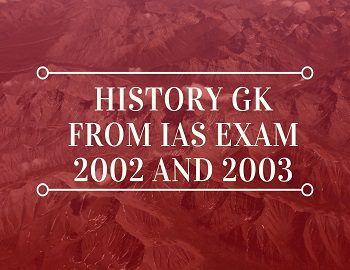
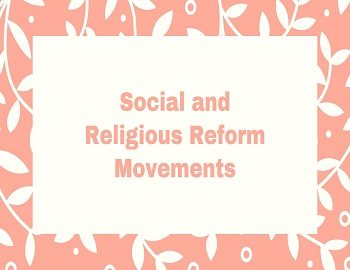
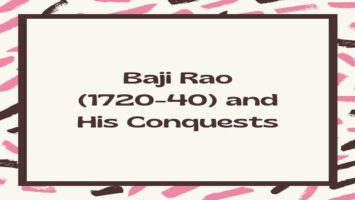
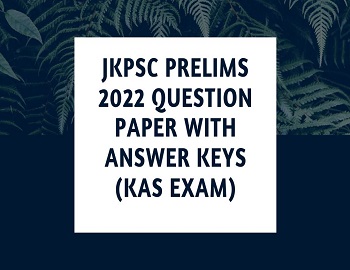
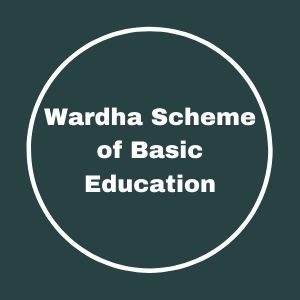

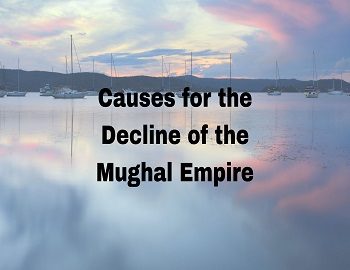
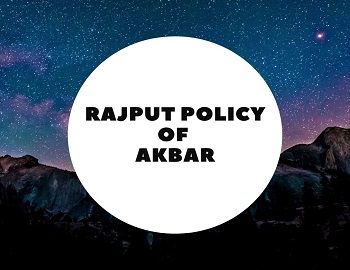

Comments (No)